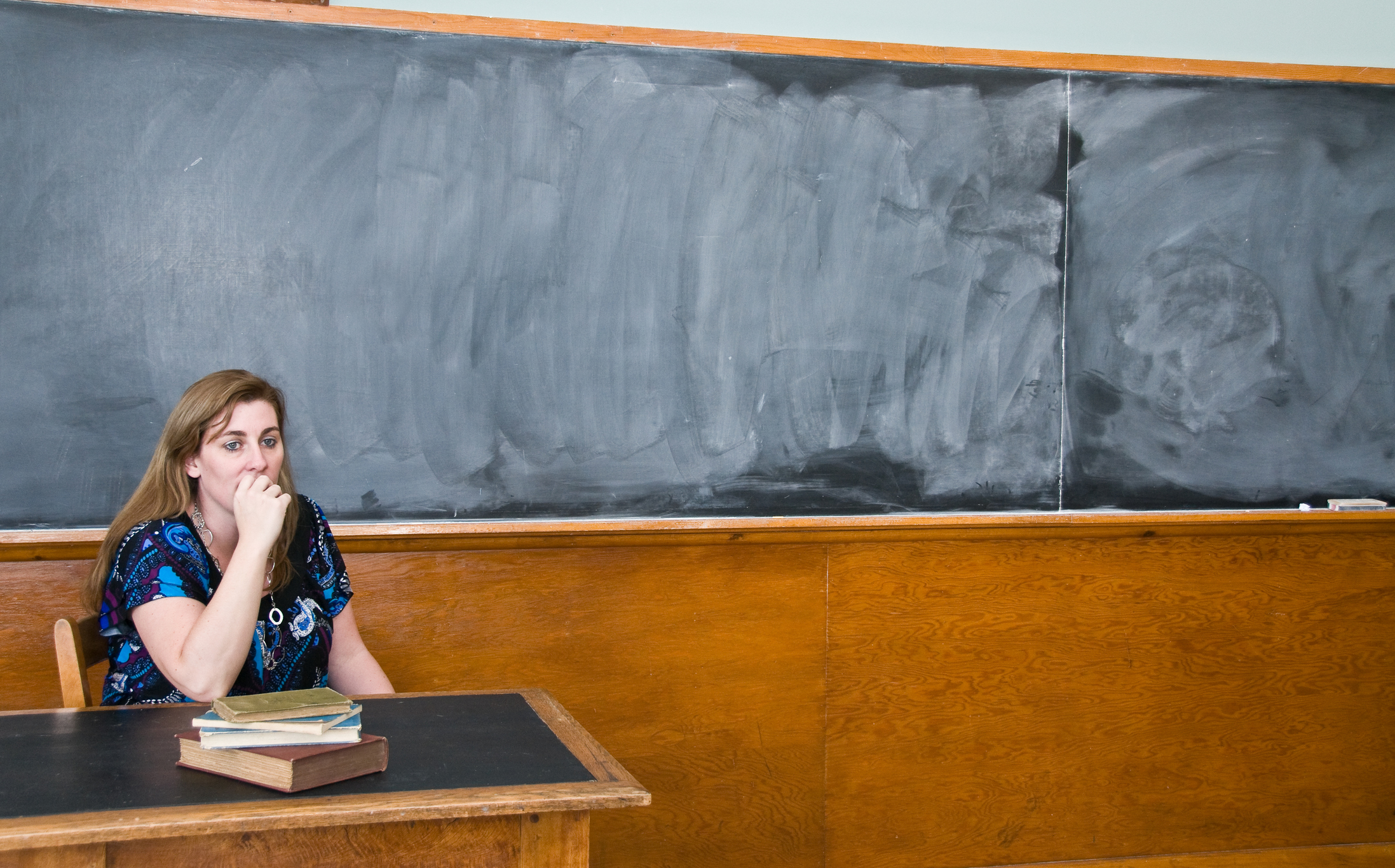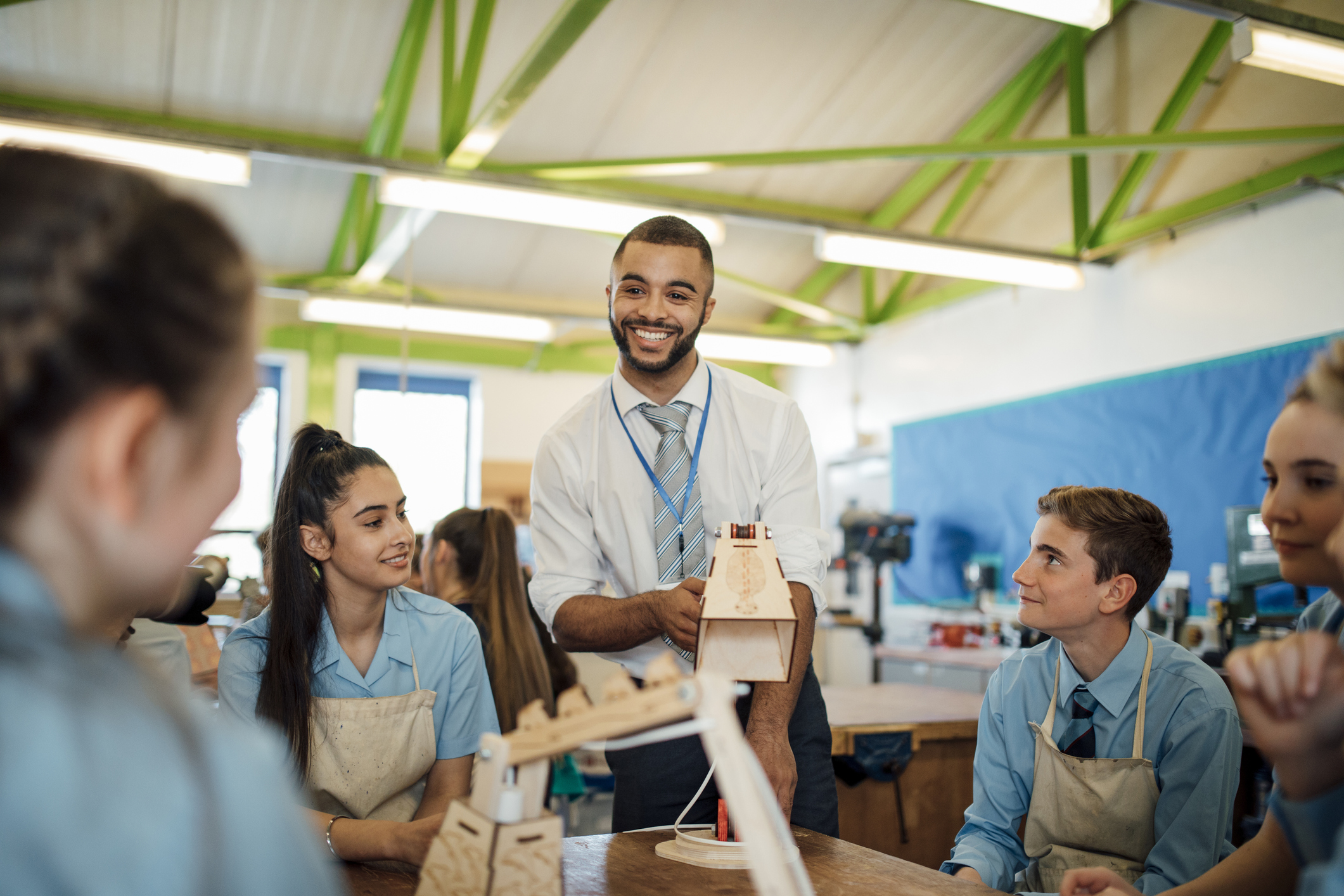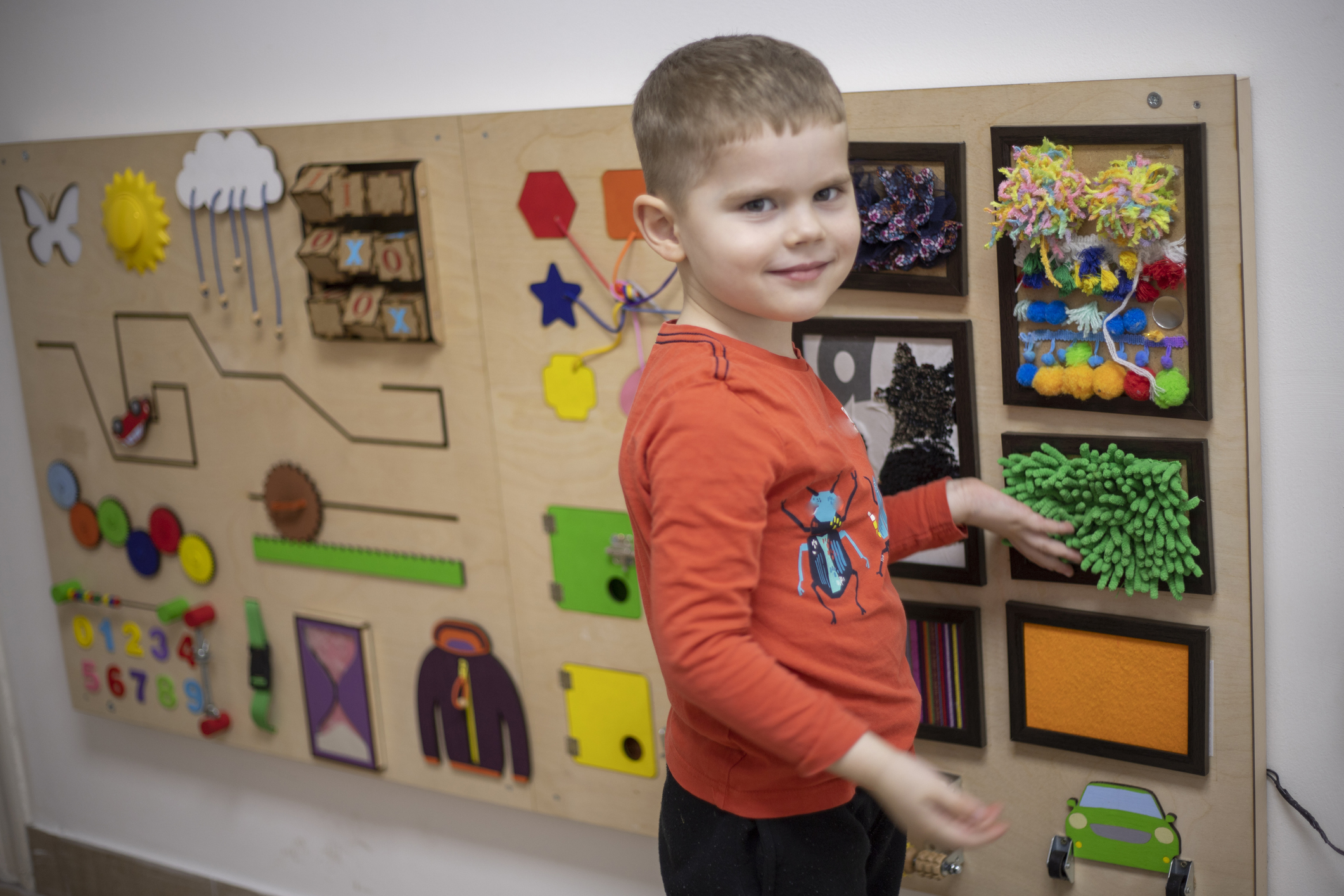In today’s rapidly evolving world, education must adapt to prepare students for the challenges and opportunities of the future. One essential skill that is increasingly being recognized as crucial for success is creativity. Cultivating creativity in the classroom not only sparks innovation and imagination but also equips students with the tools they need to think critically, solve problems, and navigate a rapidly changing landscape.
This blog post aims to explore the importance of creativity in education and provide practical strategies for inspiring innovation and imagination in the classroom. We will delve into creating an encouraging environment that nurtures creativity, incorporating creative tasks into the curriculum, promoting open-ended discussion and critical thinking, and integrating innovation into teaching methodologies.
Firstly, we will discuss the significance of creating an encouraging environment. By fostering a positive and supportive atmosphere, students feel safe to express their ideas and take risks. We will explore strategies for cultivating a classroom culture that values and celebrates creativity.
Next, we will explore how to incorporate creative tasks into the curriculum. By infusing creative elements into traditional subjects, students can develop a deeper understanding of the material while also exercising their imaginative and innovative skills.
Furthermore, we will delve into the importance of promoting open-ended discussion and critical thinking. By encouraging students to question, analyze, and explore multiple perspectives, we can enhance their ability to think creatively and solve complex problems.
In addition, we will explore different teaching methodologies that integrate innovation. We will discuss the role of technology in innovative ways, the benefits of project-based learning, and the power of collaborative work in fostering innovation.
Inspiring imagination as a learning tool will also be explored in this blog post. We will discuss the power of storytelling in learning, using arts and crafts to stimulate imagination and the effectiveness of role-playing and simulation activities.
Finally, we will address the challenges and solutions in encouraging creativity and innovation in education. We will discuss the balance between creativity and academic standards, strategies for addressing resistance to change in teaching methods, and the importance of providing resources and support for innovative strategies.
By the end of this blog post, readers will have a comprehensive understanding of the importance of cultivating creativity in education and practical strategies to inspire innovation and imagination in the classroom. Join us as we embark on this journey to empower students with the skills they need to thrive in a world that demands creativity and innovation.
Understanding the Importance of Creativity in Education
Creativity is a fundamental aspect of human nature, and its importance in education cannot be overstated. In today’s rapidly changing world, where innovation and problem-solving skills are highly valued, nurturing creativity in students is essential for their future success. This section will delve into the significance of creativity in education and highlight its numerous benefits.
1.1 Enhancing Critical Thinking Skills
Creativity and critical thinking go hand in hand. When students are encouraged to think creatively, they develop the ability to analyze situations from different angles, consider alternative solutions, and think outside the box. This process enhances their critical thinking skills, enabling them to approach complex problems with innovative and unique perspectives.
1.2 Fostering Innovation and Adaptability
Innovation is at the core of progress and growth. By nurturing creativity in education, we are fostering a generation of innovators and problem-solvers who can adapt to new challenges and find novel solutions. Creative thinking encourages students to explore unconventional ideas, take risks, and embrace change, preparing them for the dynamic nature of the modern world.
1.3 Cultivating Personal Expression and Confidence
Creativity provides a platform for students to express their unique perspectives, ideas, and emotions. When students are encouraged to be creative, they develop a sense of self-expression and build confidence in their abilities. This confidence extends beyond the creative realm and empowers students to express themselves in various aspects of their lives, including academics, personal relationships, and future careers.
1.4 Nurturing Emotional Intelligence and Empathy
Engaging in creative activities fosters emotional intelligence and empathy in students. Through artistic expression, storytelling, and imaginative play, students can explore and understand different emotions, perspectives, and experiences. This cultivates empathy and helps them develop a deeper understanding of the world, fostering a more inclusive and compassionate society.
1.5 Developing Problem-Solving Skills
Creativity is closely linked to problem-solving skills. When students are encouraged to think creatively, they develop the ability to approach problems from multiple angles, generate innovative solutions, and adapt their thinking when faced with obstacles. This skill set equips students with the tools they need to tackle real-world challenges and navigate complex situations in their personal and professional lives.
1.6 Cultivating Life-Long Learners
Creativity in education instils a love for learning and nurtures a growth mindset in students. When students are encouraged to explore, experiment, and take ownership of their learning, they develop a passion for acquiring knowledge and become lifelong learners. This mindset not only prepares them for academic success but also empowers them to continuously adapt, grow, and innovate throughout their lives.
In conclusion, understanding the importance of creativity in education is crucial for educators, policymakers, and parents alike. By fostering creativity in students, we are equipping them with the necessary skills to think critically, solve problems, innovate, and adapt in an ever-evolving world. The benefits of nurturing creativity extend far beyond the classroom, shaping students into confident, empathetic, and innovative individuals ready to make a positive impact on society.
How to Foster Creativity in the Classroom
Fostering creativity in the classroom requires intentional strategies and approaches that create an environment conducive to imaginative thinking and innovation. This section will explore various methods and techniques that educators can employ to cultivate creativity among their students.
2.1 Creating an Encouraging Environment
Creating a supportive and encouraging environment is essential for fostering creativity in the classroom. This includes building positive relationships with students, promoting a sense of belonging and acceptance, and providing a safe space where students feel comfortable expressing their ideas and taking risks.
2.2 Incorporating Creative Tasks into the Curriculum
Integrating creative tasks into the curriculum allows students to engage in imaginative and innovative thinking while still covering academic content. Educators can design projects, assignments, and activities that encourage students to think outside the box, explore different perspectives, and find unique solutions to problems.
2.3 Promoting Open-Ended Discussion and Critical Thinking
Engaging students in open-ended discussions and promoting critical thinking is a powerful way to foster creativity. By encouraging students to question, analyze, and evaluate information, educators can stimulate their imaginations and inspire them to explore alternative ideas and possibilities.
2.4 Providing Opportunities for Independent Exploration
Allowing students to engage in independent exploration and self-directed learning is crucial for nurturing creativity. Educators can provide resources, materials, and guidance, while also giving students the freedom to pursue their interests, explore new topics, and experiment with different approaches to learning.
2.5 Encouraging Collaboration and Peer Feedback
Collaboration and peer feedback play a vital role in fostering creativity. By facilitating group projects, discussions, and teamwork, educators can create opportunities for students to learn from each other, exchange ideas, and gain different perspectives. Peer feedback also helps students develop their critical thinking skills and refine their creative work.
2.6 Embracing Mistakes and Learning from Failure
Creating a culture that embraces mistakes and views them as opportunities for growth is essential for fostering creativity. Educators should encourage students to take risks, embrace challenges, and learn from failures. By reframing mistakes as valuable learning experiences, students become more comfortable exploring new ideas and pushing the boundaries of their creativity.
In conclusion, fostering creativity in the classroom requires intentional strategies that create an environment where students feel encouraged to think imaginatively and innovate. By creating an encouraging environment, incorporating creative tasks into the curriculum, promoting open-ended discussion and critical thinking, providing opportunities for independent exploration, encouraging collaboration, and embracing mistakes, educators can empower students to unleash their creative potential and develop the skills they need to thrive in a rapidly changing world.
Integrating Innovation into Teaching Methodologies
Integrating innovation into teaching methodologies is essential to foster creativity and inspire students to think outside the box. This section will explore various approaches and strategies that educators can employ to infuse innovation into their teaching practices.
3.1 Using Technology in Innovative Ways
Technology offers a wide range of tools and resources that can enhance teaching and learning experiences. Educators can leverage technology to engage students, promote collaboration, and provide opportunities for creative expression. By incorporating innovative educational apps, online platforms, virtual reality, or multimedia tools, educators can create dynamic and interactive learning environments that stimulate creativity.
3.2 The Role of Project-Based Learning
Project-based learning (PBL) is a powerful methodology for promoting innovation and creativity in the classroom. By assigning meaningful projects that require students to research, design, and create solutions to real-world problems, educators can foster critical thinking, collaboration, and creativity. PBL encourages students to think innovatively, apply knowledge in practical ways, and develop essential skills for future success.
3.3 Encouraging Innovation through Collaborative Work
Collaborative work is an effective approach to fostering innovation in the classroom. By organizing group activities, discussions, and projects, educators can promote teamwork, cooperation, and the exchange of diverse ideas. Collaborative work encourages students to think creatively, learn from each other’s perspectives, and develop innovative solutions through collective brainstorming and problem-solving.
3.4 Embracing Different Learning Styles
Recognizing and embracing different learning styles is crucial for promoting innovation. Students have unique strengths and preferences when it comes to acquiring knowledge and expressing their creativity. By incorporating a variety of teaching methods, such as visual, auditory, kinesthetic, or experiential approaches, educators can cater to diverse learning styles and provide opportunities for all students to engage and contribute creatively.
3.5 Cultivating an Entrepreneurial Mindset
Fostering an entrepreneurial mindset encourages students to think innovatively, take initiative, and embrace calculated risks. Educators can incorporate activities that promote entrepreneurial skills such as problem-solving, critical thinking, adaptability, and resilience. By encouraging students to identify opportunities, develop innovative ideas, and prototype solutions, educators can nurture creativity and inspire an entrepreneurial spirit among students.
3.6 Incorporating Real-World Connections
Bringing real-world connections into the classroom is an effective way to inspire innovation and creativity. Educators can invite guest speakers, arrange field trips, or incorporate case studies that highlight real-world challenges and solutions. By connecting classroom learning to the outside world, students can see the practical applications of their knowledge, think creatively about real-world problems, and develop innovative solutions.
In conclusion, integrating innovation into teaching methodologies is crucial for nurturing creativity and inspiring students to think innovatively. By using technology in innovative ways, implementing project-based learning, encouraging collaborative work, embracing different learning styles, cultivating an entrepreneurial mindset, and incorporating real-world connections, educators can create dynamic and engaging learning environments that foster creativity, and innovation, and prepare students for the challenges of the future.
Inspiring Imagination as a Learning Tool
Inspiring imagination as a learning tool is a powerful way to engage students and foster their creativity. This section will explore various methods and techniques that educators can utilize to stimulate imagination in the classroom.
4.1 The Power of Storytelling in Learning
Storytelling is a timeless and effective method for inspiring imagination in students. By incorporating storytelling into lesson plans, educators can captivate students’ attention, ignite their imagination, and encourage them to visualize and create their narratives. Whether through reading aloud, sharing personal stories, or using multimedia platforms, storytelling can inspire creativity and enhance students’ understanding of various subjects.
4.2 Using Arts and Crafts to Stimulate Imagination
Engaging students in arts and crafts activities provides a hands-on approach to inspire imagination. Through drawing, painting, sculpting, and other artistic endeavours, students can express their creativity, explore different materials, and bring their ideas to life. Arts and crafts activities encourage students to think imaginatively, experiment with different techniques, and develop their unique artistic voices.
4.3 Role-Playing and Simulation Activities
Role-playing and simulation activities allow students to step into different roles and scenarios, fostering imagination and creativity. By assuming different perspectives, students can explore complex concepts, develop empathy, and think critically about real-world situations. Role-playing activities encourage students to think creatively, collaborate with peers, and find innovative solutions to challenges.
4.4 Incorporating Imaginative Writing and Journaling
Encouraging students to engage in imaginative writing and journaling can unlock their creativity and imaginative thinking. By providing prompts, creative writing exercises, or journaling opportunities, educators can inspire students to explore their thoughts, emotions, and ideas creatively and reflectively. Writing allows students to develop their storytelling abilities, experiment with different writing styles, and express their imagination.
4.5 Leveraging Imaginative Play and Games
Imaginative play and games provide a dynamic and interactive way to stimulate imagination in the classroom. Educators can incorporate educational games, puzzles, and interactive activities that encourage students to think creatively, solve problems, and explore new ideas. By allowing students to engage in imaginative play, educators provide a space for them to create, innovate, and think outside the boundaries of traditional learning.
4.6 Connecting with the Arts and Culture
Integrating arts and culture into the curriculum can inspire imagination and creativity. Educators can expose students to various art forms, music, dance, theatre, and cultural traditions. By experiencing different forms of artistic expression, students can broaden their perspectives, appreciate diverse cultures, and find inspiration for their creative endeavours.
In conclusion, inspiring imagination as a learning tool opens up endless possibilities for students to explore their creativity and develop innovative thinking skills. By incorporating storytelling, arts and crafts, role-playing, imaginative writing, leveraging imaginative play and games, and connecting with the arts and culture, educators can create a classroom environment that nurtures imagination, sparks creativity, and enhances students’ overall learning experience.
Challenges and Solutions in Encouraging Creativity and Innovation
Encouraging creativity and innovation in education comes with its own set of challenges. This section will examine some common hurdles that educators may face and provide practical solutions to overcome them.
5.1 Balancing Creativity with Academic Standards
One challenge in fostering creativity is finding a balance between promoting imaginative thinking and meeting academic standards. Educators can address this challenge by integrating creative tasks into existing curriculum frameworks, aligning creative projects with learning objectives, and demonstrating the value of creativity in enhancing academic performance. By incorporating creativity as a complementary aspect of education, educators can strike a balance between fostering imagination and meeting academic requirements.
5.2 Addressing Resistance to Change in Teaching Methods
Resistance to change is another obstacle that educators may encounter when implementing innovative teaching methods. To overcome this, educators can provide professional development opportunities to help teachers develop the skills and confidence to embrace new approaches. By highlighting the benefits of creative teaching methods, sharing success stories, and facilitating open discussions, educators can create a supportive environment that encourages experimentation and innovation.
5.3 Providing Resources and Support for Innovative Strategies
Limited resources and support can hinder efforts to foster creativity and innovation in the classroom. Educators can overcome this challenge by seeking out grants, partnerships, and community resources to access additional funding and materials. Collaborating with colleagues, sharing resources, and leveraging technology can also help expand the range of available tools and support. By being resourceful and building networks, educators can provide students with the necessary resources to unleash their creativity.
5.4 Assessing and Evaluating Creative Work
Assessing and evaluating creative work can be challenging, as traditional assessment methods may not always capture the full scope of students’ creativity. Educators can address this challenge by developing alternative assessment strategies that focus on process, reflection, and growth rather than just outcomes. Rubrics that assess creative thinking, problem-solving, and originality can provide a more comprehensive understanding of students’ creative abilities. By valuing and assessing creativity, educators can encourage and celebrate students’ imaginative achievements.
5.5 Overcoming Time Constraints
Time constraints are a common challenge that educators face when trying to incorporate creativity into their lessons. To overcome this challenge, educators can prioritize and plan to allocate dedicated time for creative activities. Integrating creativity into existing subjects and finding opportunities for cross-curricular connections can also help maximize instructional time. By being intentional and strategic in time management, educators can make room for creativity without sacrificing other essential learning objectives.
5.6 Cultivating Supportive Networks and Communities
Building a supportive network of colleagues, parents, and community members is vital in overcoming challenges and sustaining efforts to foster creativity and innovation. Educators can collaborate with like-minded individuals, join professional organizations, and engage parents in the creative learning process. By fostering a sense of community and support, educators can share ideas, resources, and experiences, ultimately creating a collective effort towards nurturing creativity in education.
In conclusion, while there may be challenges in encouraging creativity and innovation in education, there are practical solutions that educators can implement. By striking a balance between creativity and academic standards, addressing resistance to change, providing resources and support, developing alternative assessment strategies, managing time effectively, and cultivating supportive networks, educators can overcome obstacles and create an environment that nurtures creativity and inspires innovation among students.
Related posts:
 Teacher Self-Care in Trauma-Informed Classrooms: Prioritizing Wellbeing for Lasting Impact
Teacher Self-Care in Trauma-Informed Classrooms: Prioritizing Wellbeing for Lasting Impact
 Understanding Trauma-Informed Education: Building Resilience in the Classroom
Understanding Trauma-Informed Education: Building Resilience in the Classroom
 Building Trust and Connection: The Role of Relationships in Trauma-Informed Teaching
Building Trust and Connection: The Role of Relationships in Trauma-Informed Teaching
 Creating Safe Spaces: Strategies for Fostering Healing and Support in Trauma-Informed Classrooms
Creating Safe Spaces: Strategies for Fostering Healing and Support in Trauma-Informed Classrooms




